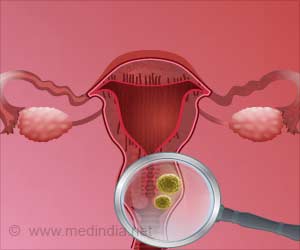Increasing maternal deaths in the US could be attributed to the increasing C-Section. Time public opinion is mobilized against unnecessary abdominal surgeries, say critics.
Pre-term births, assisted by C-Section, are on the rise in the US. Nearly one-third of women have major abdominal surgery to give birth.
Not coincidentally for the first time in decades, the number of women dying in childbirth has increased. Already, when compared with other industrialized countries, the country ranks second-to-last in infant survival. Obviously the U.S. maternity care system is failing, point out critics.The Centers for Disease Control and Prevention (CDC) in August released 2004 data showing a rate of 13.1 maternal deaths per 100,000 live births.
In contrast in Scandinavian countries, about 3 per 100,000 women die, which is thought to be the irreducible minimum.
Even more disturbing is the racial disparity: Black women are nearly four times as likely to die during childbirth than white women, with a staggering rate of 34.7 deaths per 100,000.
It is also pointed out that physician researchers who have conducted local case reviews across the U.S. consistently have found death rates much higher than what the CDC has been reporting. In New York City between 2003 and 2005, researchers found a death rate of 22.9 per 100,000; in Florida between 1999 and 2002, the rate was 17.6. Other reports by CDC epidemiologists have acknowledged that deaths related to childbirth are probably underreported by a factor of two to three.
It is not as if the status of healthcare alone is to blame for such a situation. In fact ninety nine percent of women give birth in a hospital with access to all the bells and whistles — high-tech machines that continuously monitor the baby's heart rate and drugs that can control the speed of contractions like the volume on a stereo.
Advertisement
It is a major surgery. Although it saves lives when performed as an emergency intervention, it causes more harm than good when overused.
Advertisement
Placenta accreta is one of them. The placenta embeds into the uterine scar from a previous surgery, causing a catastrophic hemorrhage at the time of delivery. Most women with placenta accreta lose their uterus; as many as 1 in 15 bleed to death. In 1970, accretas were so rare that most obstetricians never encountered one in their career. Today, according to a University of Chicago study, the incidence may be as high as 1 in 500 births. And that is all because of caesareans and repeat caesareans.
Obesity plays a part as well because obese women are more likely to have health problems that make a caesarean more likely, and more likely to suffer surgical complications.
According to a sweeping 2006 study by the World Health Organization, published last year in the medical journal Lancet, a hospital's caesarean rate should not exceed 15 percent. When it does, women suffer more infections, hemorrhages and deaths, and babies are more likely to be born prematurely or die.
Too many caesareans are literally medical overkill. Yet some U.S. hospitals are now delivering half of all babies surgically. Across the nation, 1 in 4 low-risk first-time mothers will give birth via caesarean, and if they have more children, 95 percent will be born by repeat surgery. In many cases, women have no choice in the matter. Though vaginal birth after caesarean is a low-risk event, hundreds of institutions have banned it, and many doctors will no longer attend it because of malpractice liability.
American maternity wards are fast becoming surgical suites, regrets noted author JENNIFER BLOCK.
Writing in Los Angeles Times, she stresses that the caesarean rate should be a major public health concern.
“Universal care alone won't solve the problem; what pregnant women need is entirely different care. They need doctors and hospitals that promote normal labor and delivery. Of course, reducing obesity belongs on the healthcare agenda, and so does curtailing the scalpel,” Block says.
Source-Medindia
GPL/C









